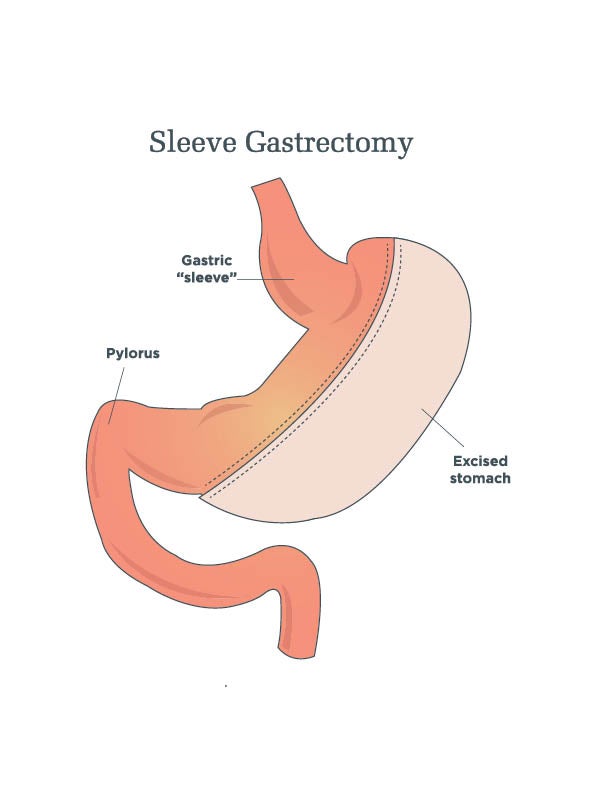The laparoscopic sleeve gastrectomy, often called the "sleeve," is performed by removing approximately 80% of the stomach. The remaining stomach is the size and shape of a banana.
The procedure
The stomach is freed from organs around it, then surgical staplers are used to remove 80% of the stomach, making it much smaller.

The new, smaller stomach holds less food and liquid helping reduce the amount of food (and calories) that is consumed. By removing the portion of the stomach that produces most of the "hunger hormone," the surgery influences the metabolism. It decreases hunger, increases fullness, and allows the body to reach and maintain a healthy weight as well as control blood sugar. The simple nature of the operation makes it very safe without the potential complications from surgery on the small intestine.
(Click on photo to enlarge)
Advantages
- Technically simple and shorter surgery time
- Can be performed in certain patients with high-risk medical conditions
- May be performed as the first step for patients with severe obesity
- May be used as a bridge to gastric bypass or SADI-S procedures
- Effective weight loss and improvement of obesity-related conditions
- May help improve quality of life by reducing physical limitations, increasing mobility and improving self-esteem and body image
- May help reduce symptoms of depression and anxiety
Disadvantages
- Non-reversible procedure
- May worsen or cause new onset reflux and heart burn
- Less impact on metabolism compared to bypass procedures
Watch the video below to learn more about Sleeve Gastrectomy.
Click these links to read testimonials from patients who have undergone laparoscopic sleeve gastrectomy procedures at Bailey Bariatrics:
